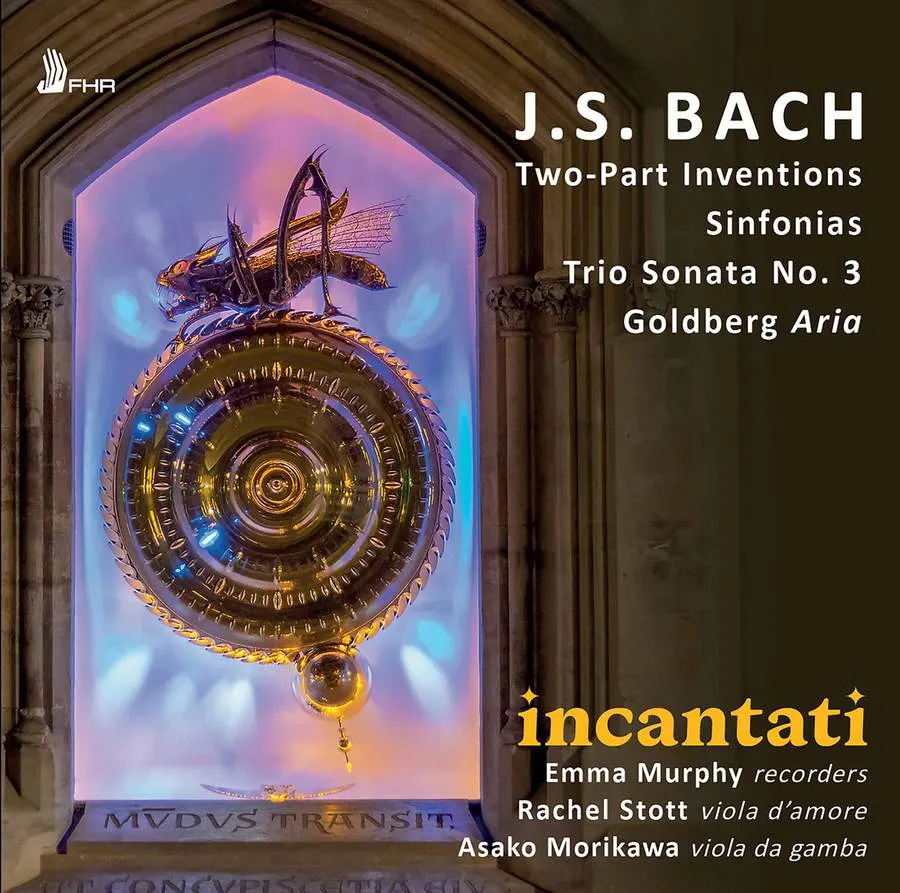
JS Bach Two-Part Inventions; Sinfonias; Trio Sonata No. 3; Organ Sonata No. 3 in D minor, BWV 527; Trio super ‘Herr Jesu Christ, dich zu uns wend’, BWV 655; Fuga super ‘Allein Gott in der Höh sei Ehr’, BWV 716; Goldberg Variations – Aria etc Incantati First Hand Records FHR122 59:57 mins
The exploratory incursions by Incantati to Bach’s keyboard Inventions and Sinfonias are imaginative and, in the main, illuminating. The 15 two-part Inventions and the 15 three-part Sinfonias first appeared in early drafts in the Clavierbüchlein for Bach’s eldest son, Wilhelm Friedemann, in 1722-23. Incantati have realised an entirely different sound spectrum with differing sizes of recorder, viola d’amore and viola da gamba. In addition to their selection of pieces from the Inventions and Sinfonias are three instrumentally treated chorales, the D minor Trio belonging to the Six Organ Trios, and the Aria upon which the Goldberg Variations are built.
The Inventions and Sinfonias had a declared didactic purpose in teaching performers how to play clearly, as well as fostering the art of contrapuntal composition and how to perfect a cantabile technique. The colourful means by which Incantati aspire to Bach’s direction is pleasing, and, in respect of clarity and cantabile playing, they might at least have earned a nod of acceptance from the composer. Apart from the novel sonorities emerging from this intimate dialogue, the music’s other chief beneficiary is one of linear definition: the Sinfonia in F major and the darkly hued F minor Sinfonia provide effective examples. Even so, it is the three chorales (BWV 655, 691 and 716), the Organ Trio and the Goldberg Aria that afford my ears the greater pleasure. They lend themselves to transcription more readily, perhaps, than the Inventions and Sinfonias which are pre-eminently keyboard pieces. Recorded sound is sympathetic.
Nicholas Anderson
More reviews
Life Reflected: an artistic collaboration commissioned by Canada’s National Arts Centre
Jun Märkl conducts Wagner’s Concert Overtures Nos 1 & 2 and other works for orchestra
Manfred Honeck conducts Shostakovich’s Symphony No. 5 and Barber’s Adagio for Strings
Ravel’s Daphnis et Chloé and other orchestral works conducted by Gustavo Gimeno
Mendelssohn’s Symphony No. 2 conducted by John Eliot Gardiner